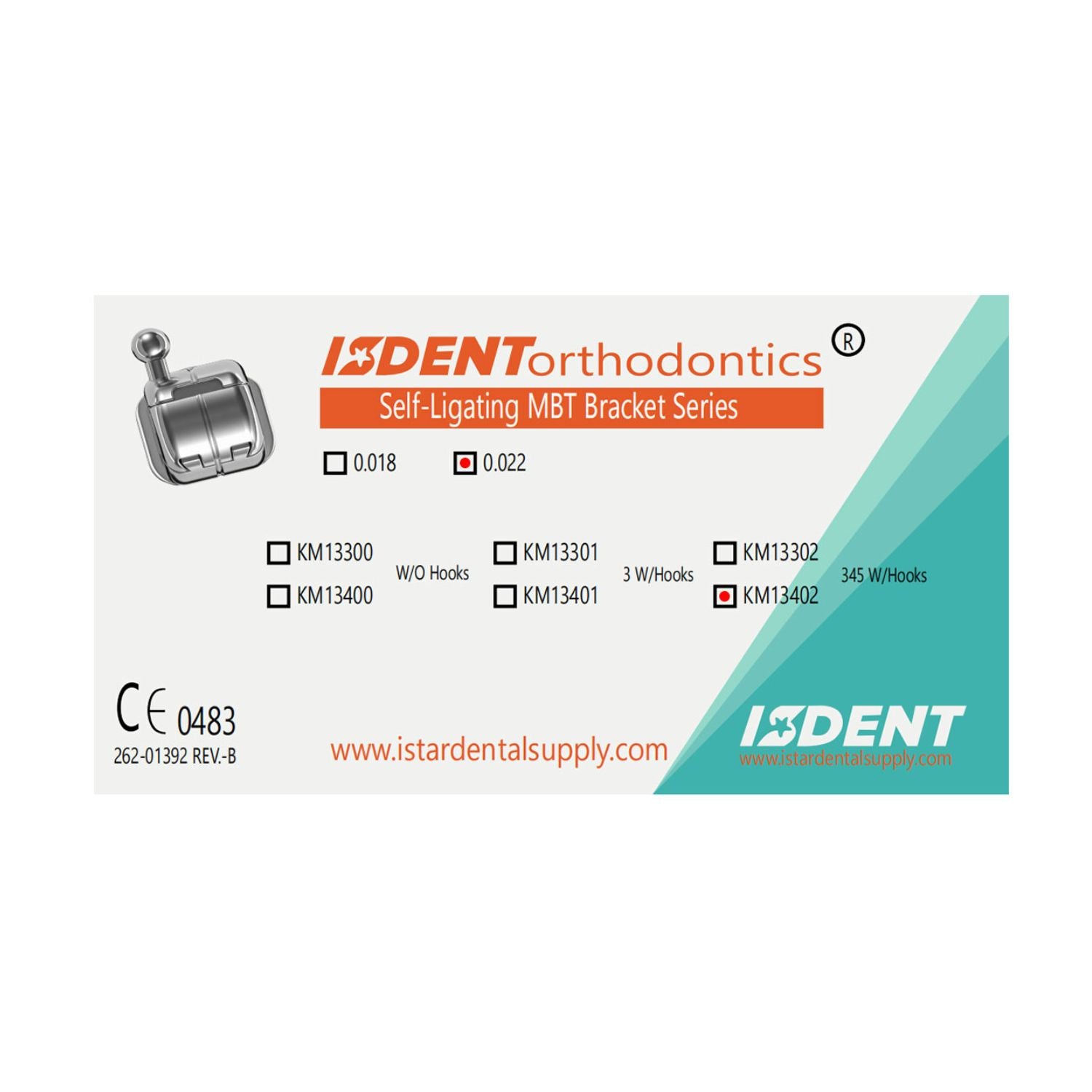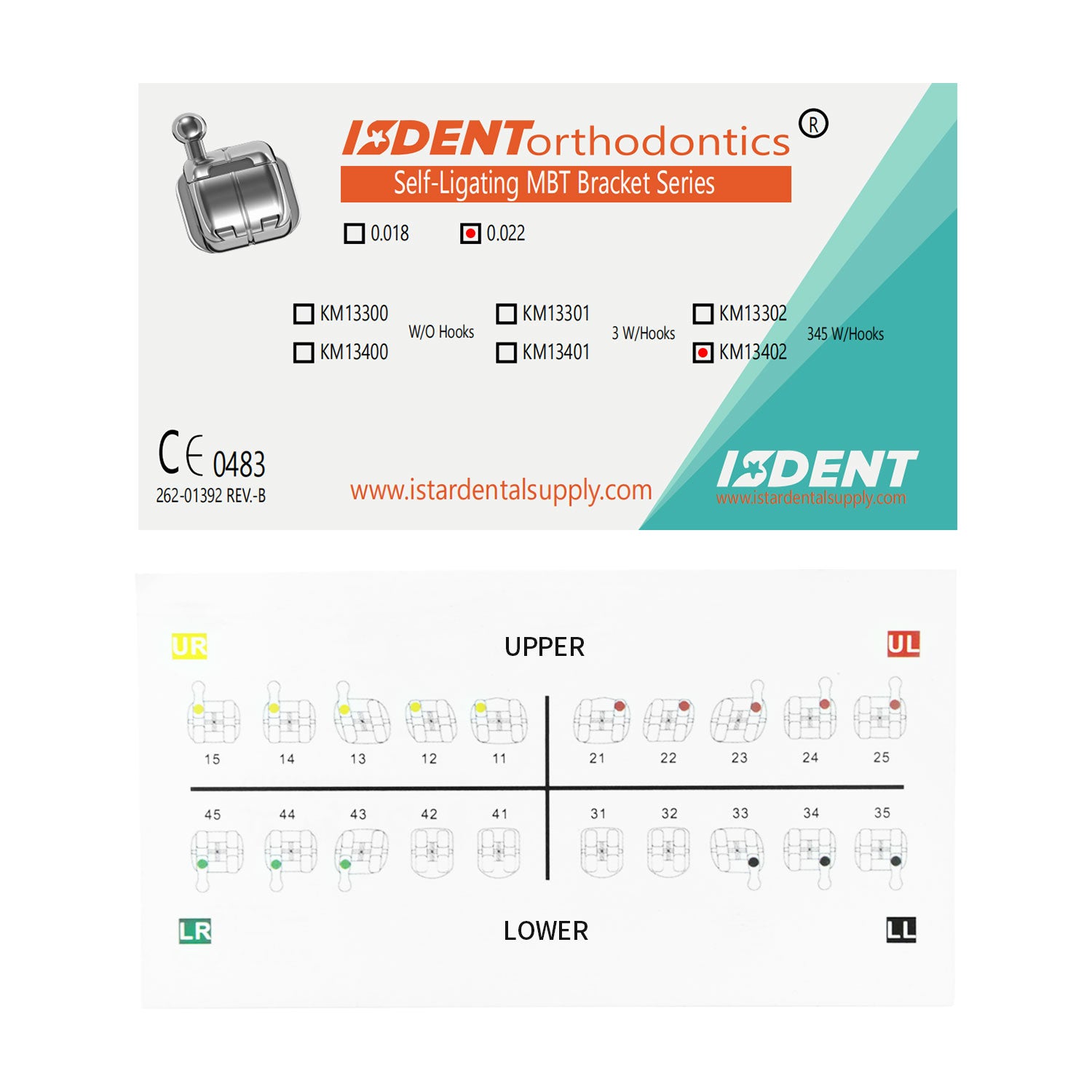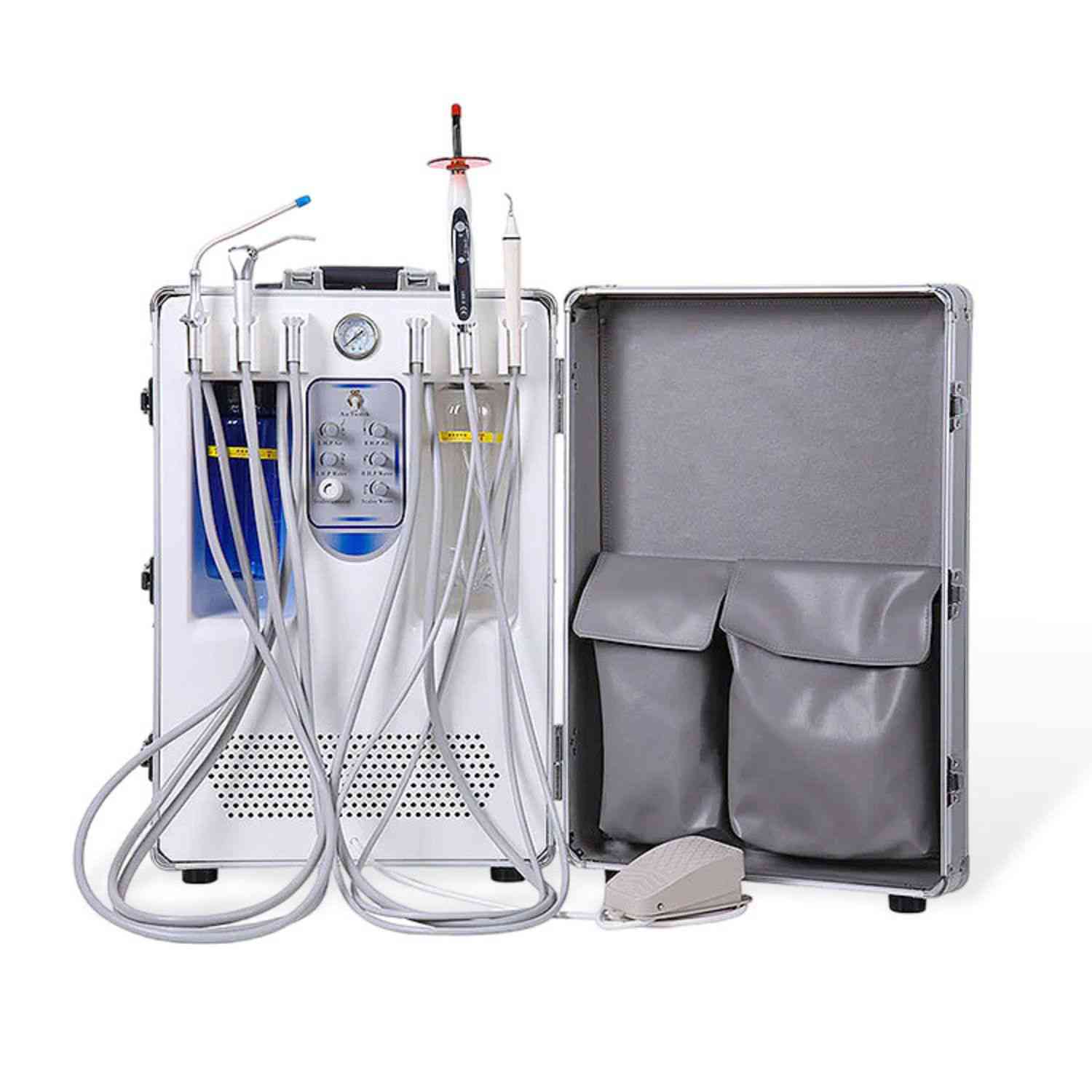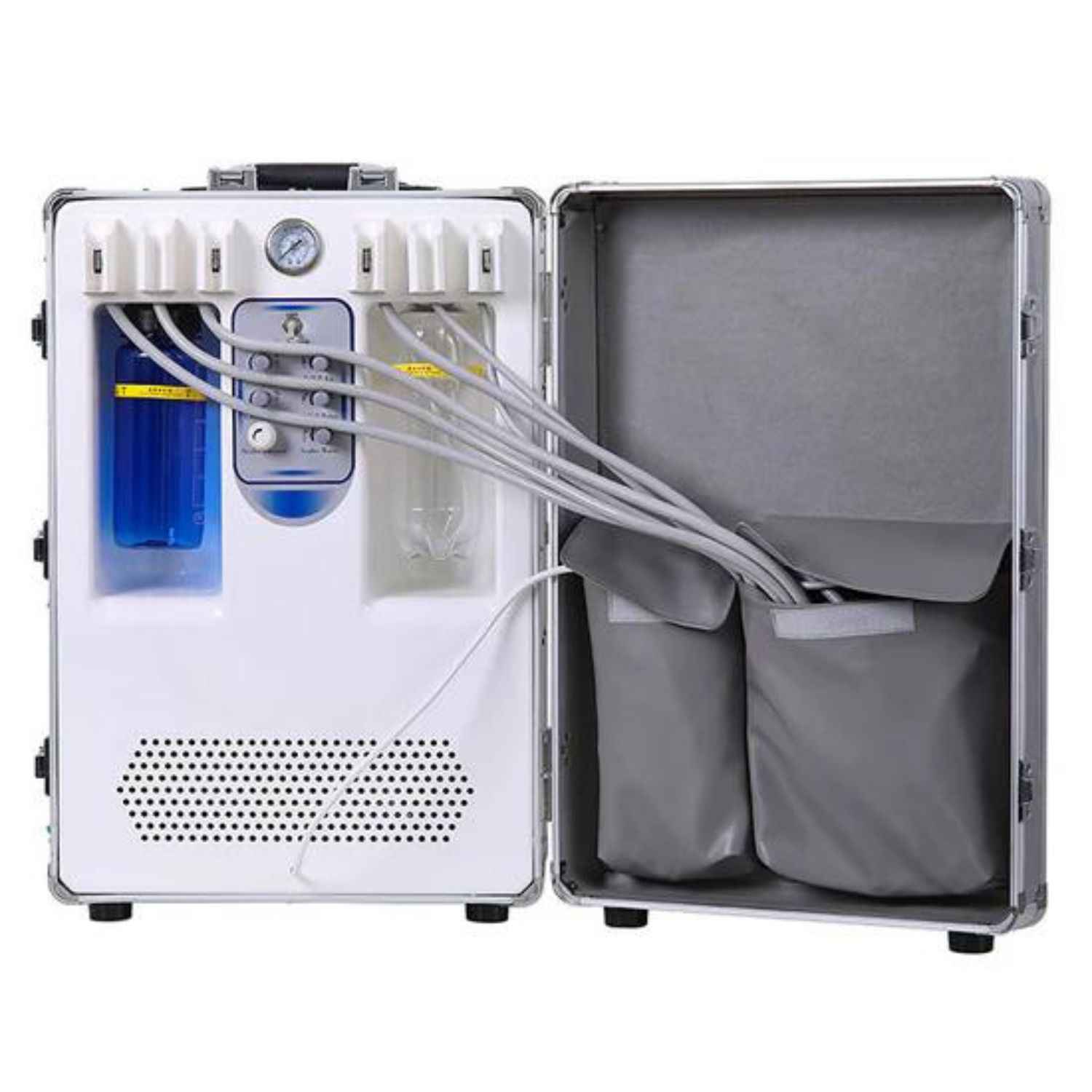What Is An Endo Motor And How Does It Revolutionize Root Canal Treatment?
One of the most important tools in modern dentistry is the endo motor. If you are a dentist or work in a dental clinic, you know how tough a root canal can be. This special tool makes the job much easier, safer, and faster. This article will explain what an endo motor is in simple terms. We will look at how it works, the different types you can get, and how to pick the best one. Reading this will help you understand why a good endo motor is a key piece of equipment for any dental practice that performs root canal treatments.
What Exactly Is an Endo Motor?
An endo motor is a special dental tool used during a root canal treatment. Think of it as a small, smart motor that helps a dentist clean the inside of a tooth. Its main job is to power tiny files that go inside the tooth's root. These files clean and shape the root canal. It's a precision dental device specifically designed for this delicate work.
Unlike the drills you might see for fillings, an endo motor is all about control. It spins the files at a very specific, slow speed. It also controls the force, or torque, that the file uses. This control is what makes the endo motor so important. It helps the dentist do a better job and reduces the risk of mistakes. Having the right tool makes all the difference, and for endodontic work, this is the right tool. This device is the heart of modern rotary endodontics.
This small but powerful machine has truly changed endodontic procedures. Before the endo motor, dentists had to clean a root canal by twisting small files with their fingers. This took a long time and was very tiring. It was also hard to do a perfect job. The endo motor automates this process. It gives the dentist more control and makes the whole process more efficient and effective. This means a better result for the patient and an easier day for the dentist. A good endo motor is a cornerstone of a modern dental clinic.
How Does an Endo Motor Work for a Root Canal?
So, how does this amazing endo motor work? The endo motor has a main unit, which is the "brain," and a small handpiece that the dentist holds. A tiny metal file, called an endodontic file, is attached to the handpiece. When the dentist turns the endo motor on, it spins the file. The dentist then guides this spinning file into the root canal.
The goal of a root canal is to remove all the infected or damaged tissue from inside the tooth. The spinning file inside the canal scrapes the walls clean. It removes the bad tissue and helps shape the canal. This makes space for the filling that will seal the tooth. The endo motor is designed to control the rotational speed and torque of the file very carefully. This ensures the canal is cleaned well without damaging the tooth. It's a perfect example of how rotational movement and precise control can improve dental procedures.
This advanced technology helps dentists to perform these tasks with great accuracy. The motor can be set to different speeds, usually between 150 and 650 rpm, depending on the file being used and the shape of the root canal. The precise control of the endo motor allows the dentist to have better access to hard-to-reach areas within the tooth. This makes the cleaning process for the root canal much more thorough. It is this control that reduces the risk of breaking a file inside the tooth, which is a big concern during performing root canal treatments.
Why Is Torque Control So Important in Endodontic Motors?
One of the most important features of any endo motor is torque control. But what is torque? In simple terms, torque is the rotational force of the motor. It’s the "push" that the motor gives to the file as it turns. Having control over this force is a crucial factor for a safe and successful root canal. If the force is too high, the file can break. If it's too low, it won't clean the canal properly.
Modern endodontic motors have amazing torque control. A dentist can set the exact amount of torque needed for a specific file or a specific canal. When the file feels too much resistance inside the tooth, the endo motor can automatically stop or even reverse its rotation. This "auto-reverse" feature is a lifesaver. It prevents the file from getting stuck and breaking. This protects the patient and makes the root canal treatment much safer. The ability of the torque allows the endo motor to handle difficult situations.
Think about cleaning a very narrow or curved root canal. This is where high torque and precise control are most needed. The increased torque allows the endo motor to work effectively even in these tough spots. Without good torque control, the dentist would have a much harder time. The motor constantly checks the force. This smart technology gives the dentist the confidence to work on even the most complex cases. So, when you look at an endo motor, always check its torque settings and safety features.
What Is a Rotary Endo Motor?
When people talk about an endo motor, they are usually talking about a rotary endo motor. This is the most common type. As the name suggests, a rotary endo motor uses continuous rotation. This means the endodontic file spins in a full circle, like a drill, but much, much slower. This steady, smooth motion is very good at cleaning and shaping the root canal.
The continuous rotary movement allows the dentist to clean the canal to remove infected tissue quickly and smoothly. The special files used with these motors, called rotary files, are very flexible. They can follow the curves of a root canal without causing damage. This is one of the biggest advantages over traditional manual instrumentation.
Using a rotary system is now the standard for most endodontic treatments. It makes the procedure more predictable. The dentist has better control over the instrumentation. The result is a clean, well-shaped canal that is ready for filling. This leads to a higher success rate for the root canal procedure. For any dental practice doing endodontic work, having a reliable rotary endo motor is a must. It simply makes the job better for everyone, the dentist and the patient.
What Are Reciprocating Endo Motors?
While rotary motors are very popular, there's another type you should know about: reciprocating endo motors. Instead of spinning in a full circle, the file in a reciprocating endo motor moves back and forth. It turns a large angle in the cutting direction and then a smaller angle in the opposite direction. This movement is designed to reciprocate.
Why use this back-and-forth motion? The main reason is to reduce stress on the file. When a file spins continuously, it can build up stress, especially in a curved canal. This can lead to the file breaking. The reciprocating motion helps to release this stress. The file "cuts" on the forward motion and "disengages" on the backward motion. This makes it less likely to get stuck or break. It’s a clever way to improve safety during a root canal.
Many dentists love reciprocating endo motors because they often use just one file to shape the entire canal. This can save time and money. The motion is also very effective at moving debris out of the canal. Some of the best endo motors on the market today offer both rotary and reciprocating modes. This gives the dentist the flexibility to choose the best motion for each specific case. The ability to reciprocate is a key feature to look for.
Should I Consider a Brushless Endo Motor?
When you start looking at different models, you might see the term "brushless endo motor". A brushless motor is a newer and better type of micro motor. Older motors used small carbon brushes to work. These brushes would wear out over time. They also created more heat and noise.
A brushless endo motor does not have these brushes. This makes it much more durable and reliable. It lasts longer and needs less maintenance. I’ve noticed they are also much quieter and smoother to operate. This creates a better experience for both the dentist and the patient. It also means the motor can deliver more power despite being lightweight. The higher ratio means the motor can deliver more power and precision.
The main benefit is performance. A brushless endo motor provides very stable speed and torque. The power does not fade as the battery gets low. This consistency is very important during a delicate endodontic procedure. They also tend to have a prolonged battery life and reducing the need for constant charging. While a brushless endo motor might cost a little more. The long life and better performance make it worth the price for any serious dental practice.
How Does an Apex Locator Feature Help?
One of the coolest features you can find in a modern endo motor is an integrated apex locator. This is a game-changer. The apex is the very tip of the tooth's root. During a root canal, it is very important for the dentist to know exactly where this tip is. If they clean past the apex, it can cause pain and problems. If they don't clean all the way to the apex, they might leave some infection behind.
An apex locator is a device that helps the dentist find the apex electronically. It sends a very small, safe electrical current through the file. When the file tip reaches the apex, the device beeps or shows a signal on a screen. In the past, dentists had to take many X-rays to check the file's position. This took time and exposed the patient to more radiation. The apex locator makes this process faster and much more accurate.
Having a motor and apex locator in one device is incredibly convenient. The endo motor can be set to automatically stop or reverse when the file reaches the apex. This ensures a safer procedure. It prevents the dentist from accidentally going too far. This feature is especially helpful in canals with tricky shapes. It gives the dentist real-time feedback, allowing them to work with more confidence and precision.
What Are the Different Types of Endo Motors I Can Find?
When you start shopping, you'll see there are different types of endo motors. The main types are based on their features and technology. You have basic corded models that plug into the wall. You also have cordless models that run on a battery. Cordless models are very popular because they are easy to move around and have no wires to get in the way.
Then, you have the difference in motion, which we talked about. There are rotary endo motors that use continuous rotation. There are also reciprocating endo motors. Many of the best endo motors today are hybrids. They can do both rotary and reciprocating motions. This gives the dentist the most flexibility. They can switch the motion based on the file system they prefer or the needs of a specific tooth.
Finally, you have motors with different levels of technology. Some are simple, with just speed and torque settings. Others are advanced, with a brushless motor, a built-in apex locator, and pre-programmed settings for different endodontic files. These advanced endodontic motors can make performing root canal treatments much simpler and more predictable. When looking at the different types of endo motors, think about the needs of your dental clinic and the types of procedures you do most often.
What Should I Look for When Choosing the Best Endo Motor?
Choosing the best endo motor can feel like a big decision. From my experience, there are a few key things to look for. First, think about the motor itself. Is it a brushless motor? As I said, a brushless endo motor is more durable and performs better. It's a great investment for dental practices. Also, check the range of speed and torque the motor offers. You want a wide range to work with different file systems.
Second, consider the ergonomics. The dentist will be holding this tool for long periods. You want an endo motor that is comfortable and well-balanced. Look for a lightweight handpiece with a small head. A smaller head gives the dentist a better view of the tooth they are working on. It’s a small detail that makes a big difference. When selecting the right endo motor, try to hold it if you can.
Third, look at the features. Does the endo motor have a built-in apex locator? Does it offer both rotary and reciprocating motions? Does it have pre-set programs for the file system you use? These features can save a lot of time and improve safety. Choosing the right endo motor is about finding the right balance of performance, comfort, and features for your practice's needs. The best endo tool is the one that fits your workflow perfectly.
Why is a Good Endo Motor a Smart Investment for My Dental Clinic?
A good endo motor can completely change how you do endodontic work. It makes root canal procedures faster. This means you can see more patients or spend more time on other treatments. Time is money in any dental clinic.
Efficiency is just one part of it. A quality endo motor also improves the quality of your work. The precision and control you get leads to better outcomes for patients. This means fewer complications and happier patients. A happy patient is more likely to return and recommend your practice to others. The use of a modern dental endodontic tool like an endo motor shows patients that you are committed to giving them the best care.
Finally, a good endo motor makes the job less stressful for the dentist. Cleaning a canal by hand is physically demanding. Using an endo motor reduces hand fatigue and makes the procedure more comfortable to perform. The safety features, like torque control and an integrated apex locator, also reduce the mental stress of worrying about file breakage. When you choose an endo motor, you are investing in efficiency, quality, and your own well-being. That's what makes it one of the smartest investments a practice can make.
Things to Remember
-
An endo motor is a special tool that helps dentists clean and shape the root canal during a root canal treatment.
-
It offers precise control over the rotational speed and torque of the file, which makes the procedure safer and more effective.
-
Torque control with auto-reverse is a key safety feature that helps prevent files from breaking inside the tooth.
-
There are two main types of motion: rotary (continuous spinning) and reciprocating (back-and-forth). Many modern endo motors offer both.
-
A brushless endo motor is more durable, quieter, and provides more consistent power than older brushed motors.
-
A built-in apex locator is a very valuable feature that helps the dentist accurately measure the length of the root canal without extra X-rays.
-
When choosing the right endo motor, consider the motor type, ergonomics (comfort and weight), and advanced features that fit your needs.









